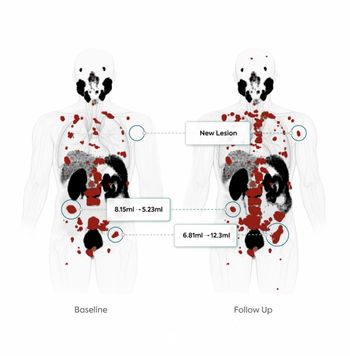
Cardiac MRI Reveals Post-Recovery Heart Damage in 78 Percent of COVID-19 Patients
Scans show cardiovascular impact lingers after the acute phase of viral infection and into recovery.
MRI scans reveal that heart damage caused by COVID-19 remains present in 78 percent of patients who test positive for -- and recover from -- the virus, a new study has revealed.
In an article published July 27 in
“The results of our study provide important insights into the prevalence of cardiovascular involvement in the early convalescent stage,” wrote the team led by Valentina Puntmann, M.D., Ph.D., from the Institute for Experimental and Translational Cardiovascular Imaging at the University Hospital Frankfurt. “Our findings demonstrate that participants with a relative paucity of pre-existing cardiovascular condition and with mostly home-based recovery had frequent cardiac inflammatory involvement, which was similar to the hospitalized sub-group with regards to severity and extent.”
In addition, the study analysis revealed that the cardiovascular damage lingers even after the acute phase of the disease has passed and patients have begun their recovery. The team identified the presence of ongoing inflammation in the heart muscle and the heart lining in most patients, pointing to two potentially dangerous heart conditions – myocarditis and pericarditis.
Consequently, they said, there is a need for more research to determine the full extent of the long-term impacts of COVID-19 on the heart.
To investigate how the virus affects the heart, Puntmann’s team evaluated 3T MRI scans from an unselected cohort of 100 patients who had recently recovered from COVID-19. To their knowledge, this was the first such study. Most patients (53 percent) were male, the average age was 46, and the majority (67 percent) recovered at home. The severity of their disease course varied from asymptomic to severe enough to require hospitalization. Pre-existing conditions present among all patients included hypertension, diabetes, previously identified coronary artery disease, asthma, and chronic obstructive pulmonary disease. No patient had prior heart failure or cardiomyopathy.
Additionally, compared to healthy patients, individuals who recovered from COVID-19 experienced left ventricular ejection fraction, higher left ventricle volumes, higher left ventricle mass, and raised native T1 and T2, indicating active inflammatory processes. Among the specific results, 78 percent of patients had abnormal cardiac MRI findings, including raised myocardial native T1 in 73 percent of patients and increased myocardial native T2 in 60 percent of patients, as well as detectable high-sensitivity troponin in 76 percent of patients. Thirty-two percent of patients experienced myocardial late gadolinium enhancement, and 22 percent saw pericardial enhancement.
“Our findings may provide an indication of potentially considerable burden of inflammatory disease in large and growing parts of the population and urgently require confirmation in a larger cohort,” the team said. “Although the long-term health effects of these findings cannot yet be determined, several of the abnormalities described have been previously related to worse outcome in inflammatory cardiomyopathies.”
Most of the imaging findings, they said, indicate ongoing perimyocarditis after the acute phase of COVID-19 infection.
There were limitations to the study, however, the team said. The findings have not yet been validated with the pediatric patient population, nor do the results represent patients who have current acute COVID-19 infection.
Even with these limitations, though, the results from this study are informative, said Clyde Yancey, M.D., chief of cardiology at Northwestern University Feinberg School of Medicine in an accompanying
“When added to the postmortem pathological findings [from other studies,] we see that plot thickening, and we are inclined to raise a new and very evident concern that cardiomyopathy and heart failure related to COVID-19 may potentially evolve as the natural history of this infection becomes clearer,” said Yancey, who is also the deputy editor of JAMA Cardiology. “We wish not to generate additional anxiety, but rather to incite other investigators to carefully examine existing and prospectively collect new data in other populations to confirm or refute these findings.”
Further investigation of these practical concerns, he said, could continue to shed light on additional aspects of the COVID-19 crisis.
Newsletter
Stay at the forefront of radiology with the Diagnostic Imaging newsletter, delivering the latest news, clinical insights, and imaging advancements for today’s radiologists.



























